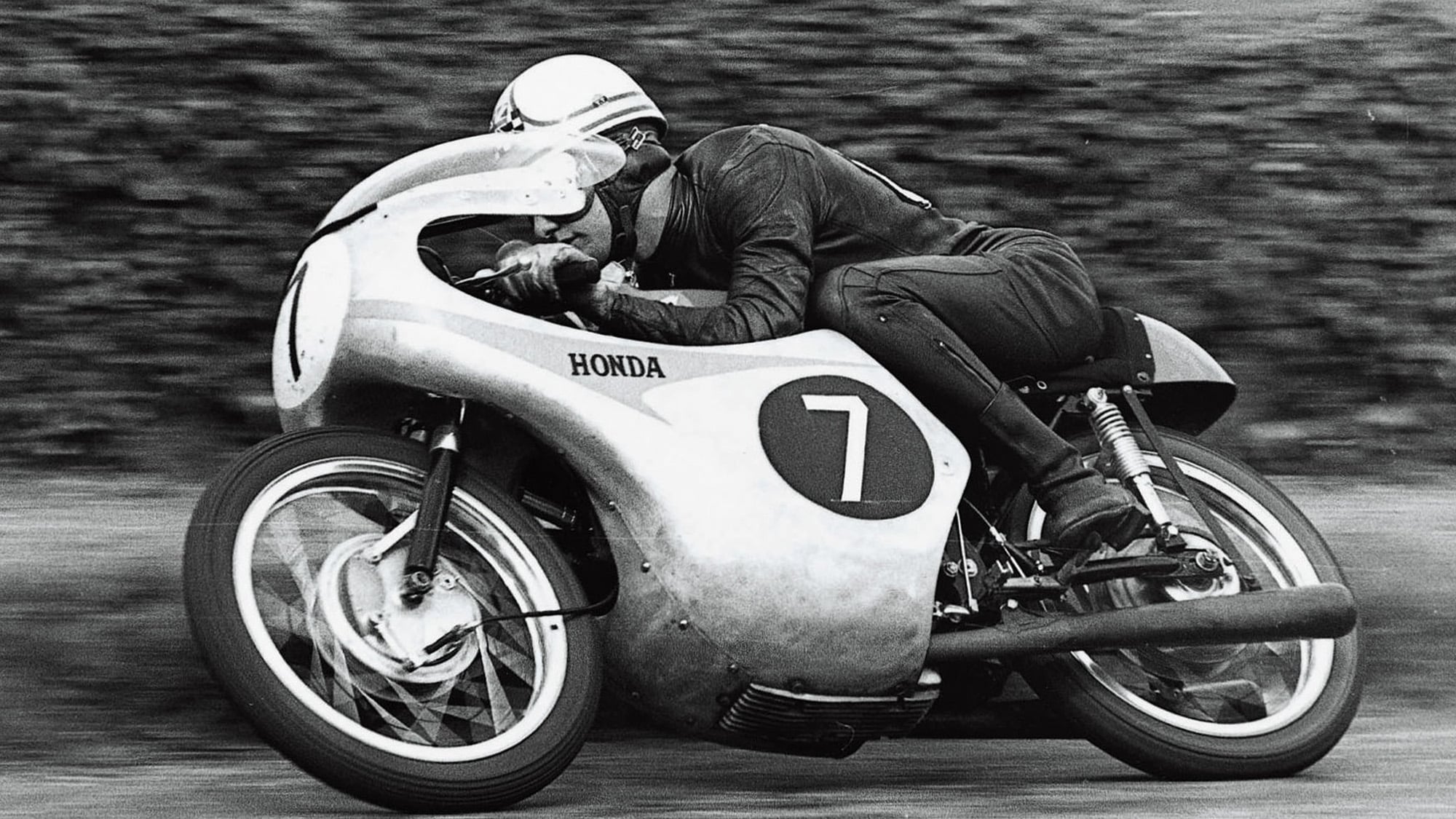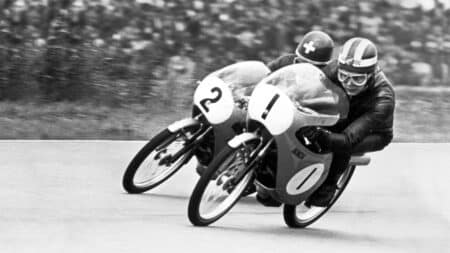Honda-san made his final visit to a motorcycle grand prix a quarter of a century later, some years after his engineers had forsaken his beloved four-strokes to go with the two-stroke flow. In May 1985 he arrived at Jarama to watch Freddie Spencer during his march to a unique 500cc/250cc world title double, riding NSR500 and NSR250 two-strokes, which used reed-valve induction.
“Mr Honda came to Jarama and we were told he would be visiting the garage,” remembers renowned mechanic Stuart Shenton, who looked after Spencer’s 250s. “We were told what to do and where to be, then we stood there waiting.
“Mr Honda arrived and laid into Takeo Fukui [later president and CEO of Honda]. I asked one of the Japanese what he was saying. He told Fukui, ‘Are you stupid? Did you pay attention at school? Because you don’t know what you’re talking about!’ He said, ‘Right, you’ve built these bikes with reed valves, now bring me a reed valve.’ Then he lectured the engineers about how he thought the reed valve should be.”
A year or two later Shenton was at HRC (Honda Racing Corporation) in Japan to build the latest bikes for the new season.
“Mr Honda turned up holding a motocross cylinder. He’d come to find the designer. He said, ‘Who designed this?!’ A bloke stuck up his hand and the cylinder was hurled at him across the room; then Mr Honda turned and walked out.”
Although his workers nicknamed him The Old Man, he wasn’t always avuncular.
Mr Honda died in August 1991 in Tokyo at the age of 84. His funeral was a modest affair, according to his written request: “Don’t have a funeral procession that will interfere with the traffic.”
Mat Oxley has covered motorcycle racing for many years – and also has the distinction of being an Isle of Man TT winner
Follow Mat on Twitter @matoxley


